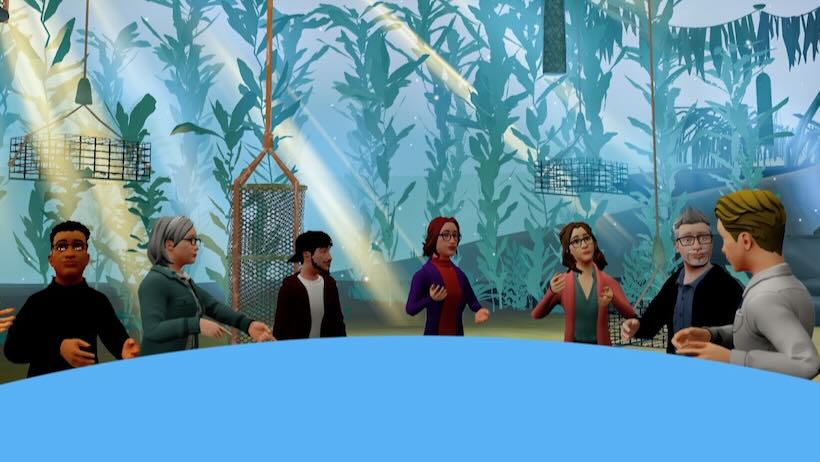The Global Collaboration Village (GCV) is, in many ways, an ideal example of what a metaverse could be. This innovative digital platform could allow citizens worldwide to virtually attend the World Economic Forum’s yearly conference in Davos, Switzerland. It’s forward-thinking, innovative, and democratizing. But like many other ambitious metaverse initiatives, it is still under development.
To learn more about the GCV’s untapped potential, Worth Media CEO Josh Kampel met with the project’s president, tech industry veteran Chieh Huang, to discuss how it could make the Davos conference more accessible for everyday people in remote locations.

“The Global Collaboration Village is a strategic extension of the World Economic Forum,” Huang said. “It’s bringing immersive 360-degree experiences—VR [virtual reality] and AR [augmented reality]—to broaden the impact and broaden the role of the WEF around the world.”
Coming out of the pandemic years, metaverses were all the rage among tech companies. Mark Zuckerberg famously changed Facebook’s name to Meta and has spent an estimated $1B a year developing its Horizon metaverse platform. Two years later, traditional Facebook apps have 4 billion Monthly Active Users (MAUs), and Meta Horizon has just 200,000 MAUs. Nevertheless, Huang still believes the metaverse has merit in the proper use cases. He thinks the Global Collaboration Village is the right fit for the technology.
“I know the hype cycle has gone up and down. But overall, it’s the first time we believe, ever, that the metaverse has been used at this level,” he said. “We’ve got over 30 sessions, hundreds of participants, from heads of state to business leaders, to engaged citizens. It’s a pretty historic moment for the metaverse.”
After a proof-of-concept in 2022, the WEF officially announced the GCV at the Davos conference last year. A Microsoft blog post further outlined the project’s lofty ambitions, including its use of the flexible Microsoft Mesh technology:
“Mesh will enable collaboration, presence, and shared immersive experiences from anywhere, on any device—whether that’s a virtual reality headset, PC, or mobile device—and regardless of where you are physically located.”
Today, the GCV looks like many other Metaverse projects still under development. The official website shows off a bunch of colorful screenshots with some Cartoonish avatars. Promotions also invite users to participate in immersive locations, such as the Climate Tipping Points Hub and the Energy Experience.

At present, though, these applications are available only to WEF members. There’s no way for the general public to log in and join the GCV. The “Join us” page encourages prospective business partners to get in touch and everyday readers to learn more about the WEF’s general Metaverse plans.
Huang says that hardware and software for projects like GCV are still in their infancy. He compares the current state of the market to the early days of smartphones. “It was pretty cool when you used your first-ever smartphone,” he said. “But you were like, ‘Well, what can I really do with this?’ And the graphics on the first games weren’t that good. It sounds a lot like what people are saying about virtual reality today. That said, this will probably go away as soon as this year, surely over the next few years.”







